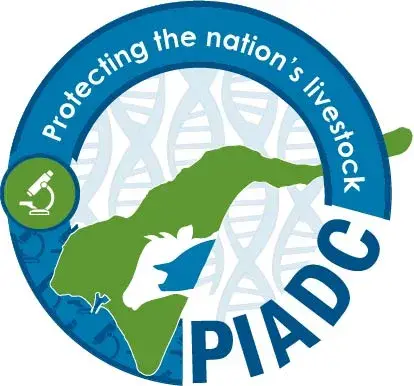intoxication alimentaire (F)
intossicazione alimentare (I)
intoxicación alimentaria (S)
Lebensmittelvergiftung (G)
intoxicação alimentar (P)
plum island, southold, new york
It’s a helpful term to know if you are traveling and start feeling unwell. It can’t be escaped. Food poisoning (we’ll talk more about what it is later) is universal-it afflicts humans everywhere on earth. The posts on this blog don’t focus on your host, Rufous Feathertail, but let’s just say this post is personally relevant of late–’nuff said.
It’s interesting that a number of our languages define food poisoning as the intoxication of the alimentary canal or the gastrointestinal tract. Just in you wondered, the alimentary canal is a continuous passage in a human being, starting from the mouth and ending at the anus, which carries food through different parts of the digestive system and allows waste to exit the body. So, its “intoxication” is definitely a problem. In the English language, food poisoning refers to an illness caused by consuming contaminated or toxic food. Despite the use of the word poisoning, it doesn’t refer to the consumption of food tainted by chemical or actual poisons.
The food that is the cause of all the trouble is usually contaminated by a bacteria, a virus or a toxin. Or someone handling the food is carrying the bacteria or virus and somehow it ends up in the food. How soon you start feeling bad depends on what you’ve ingested. Sometimes you feel bad in minutes or hours or it could take days or weeks. This post isn’t going to describe the symptoms of food poisoning but apologies as this list of potential sources of food poisoning might put you off eating altogether.
Some of the most common bacterial causes of food poisoning are:
- Bacillus cereus: created when food is left unrefrigerated for too long.
- Campylobacter: a bacteria in raw or undercooked shellfish, poultry or unpasteurized milk as well as contaminated water.
- Clostridium botulinum: AKA “don’t eat anything out of a can that is bulging.” Botulism is caused by improperly canned food.
- Clostridium perfringens: bacteria which grows when food isn’t kept hot enough.
- Escherichia coli, commonly called E. coli: most commonly associated with ground beef or undercooked meat, unpasteurized milk or juice, soft cheeses from unpasteurized milk, and fresh fruits and vegetables.
- Listeria: Found in hot dogs, luncheon meats, unpasteurized milk, soft cheeses from unpasteurized milk, refrigerated smoked fish, refrigerated pates or meat spreads, and fresh fruits and vegetables, this is a particularly bad bacteria for pregnant people to ingest as it can cause miscarriage.
- Salmonella: where the advice against eating raw eggs comes from as it is most often found in poultry, eggs and dairy products.
- Staphylococcus aureus: meat, egg salad, potato salad or cream-filled pastries that have been left out too long or not refrigerated; and, finally,
- Vibrio: raw or undercooked fish or shellfish, especially oysters, where the water they are filtering is contaminated with sewage.
- Viruses causing food poisoning include Norovirus, also known as the cruise ship virus as it is very contagious; Rotovirus; and Hepatitis A.
- Toxins include Giardia lamblia, caused by a parasite, and shellfish poisoning, caused by a toxin.
Since food poisoning occurs everywhere in the world, it seemed unfair to choose a place just because at some point it had an outbreak. So, instead we’re going to talk about a place dedicated to safeguarding the American food supply, at least with regard to the animals which humans consume. It is the Plum Island Animal Disease Center, located on (drumroll please) Plum Island, a 3-mile-long by 1-mile-wide island, situated in Gardiners Bay, east of Orient Point, off the eastern end of the North Fork coast of Long Island. As the crow flies (or, nowadays, as the drone flies), it’s less than 25 miles from those famous Hamptons.

Established in 1954, Plum Island has been involved in preventing either the accidental or intentional introduction of contagious animal diseases in livestock and other animals, in particular foot-and mouth disease (FMD) and Africa swine fever (ASF). FMD affects cloven-hoofed animals such as cows, sheep, pigs, deer, and goats. It doesn’t infect humans but it is found all over the world. The United States has not had an outbreak since 1929. An outbreak in the United Kingdom in 2001 caused an estimated economic loss of $8 billion and the slaughter of 6.2 million animals. Plum Island was the only place in the United States authorized to work on live viruses. Nearly 400 employees worked on the island. The lab helped to eradicate rinderpest, a deadly cattle disease that is one of only two diseases, the other being smallpox, to be totally eradicated.
In 2023, a new facility, the National Bio and Agro-Defense Facility, in Manhattan, Kansas, was opened and Plum Island’s operation are to be relocated. Quite a geographic change for the staff. To riff on Dorothy’s famous line, “I’ve a feeling we’re not in Plum Island anymore”. Perhaps the staff will miss their commute to the island (well, maybe not on a stormy day in mid-winter). Here’s to a smooth move.
